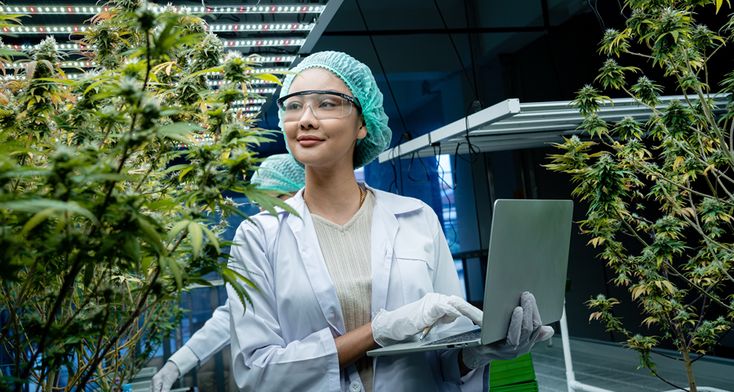Cannabis cultivation, whether in vast indoor facilities or advanced greenhouses, demands an incredibly precise climate. Unlike many other crops, cannabis plants are highly sensitive to fluctuations in temperature and, perhaps even more critically, humidity. Too much moisture in the air can lead to devastating mold and mildew outbreaks, while too little can stress the plants and hinder growth. This is where Hot Gas ReHeat Cannabis (HGRH) emerges as a game-changer in enhancing climate control, offering a sophisticated and energy-efficient solution for cannabis facilities.
The Challenge of Humidity in Cannabis Cultivation
Cannabis plants transpire significant amounts of water vapor, especially during the vegetative and flowering stages. This process, while essential for growth, rapidly increases the humidity within the sealed or semi-sealed grow environment. Traditional HVAC systems and standalone dehumidifiers often struggle to manage this latent load effectively without creating other problems:
- Overcooling: Standard air conditioning units remove moisture by cooling the air below its dew point. To remove enough moisture, they might overcool the space, forcing growers to then add heat back into the room, leading to inefficient energy use and temperature swings that stress plants.
- Inefficient Dehumidification: Standalone dehumidifiers can work, but they often struggle to integrate seamlessly with the overall HVAC system, leading to energy waste and potentially uneven humidity distribution.
- Temperature Swings: The constant battle between cooling for dehumidification and heating for optimal plant temperature can create inconsistent environments, impacting plant health, cannabinoid and terpene profiles, and ultimately, yield and quality.
- Mold and Mildew Risk: High humidity creates a perfect breeding ground for destructive pathogens like botrytis (bud rot) and powdery mildew, which can decimate entire crops.
How Hot Gas Reheat Works Its Magic
Hot gas reheat systems are a sophisticated form of dehumidification that leverages the refrigeration cycle itself to achieve precise climate control. Here’s a simplified breakdown:
- Cooling for Dehumidification: Just like a conventional air conditioner, the system first cools the moist air by passing it over an evaporator coil. As the air cools, water vapor condenses into liquid, effectively removing humidity from the air.
- Reusing “Waste” Heat: Instead of expelling the heat absorbed during the cooling process (which would typically go to the outdoor condenser coil), a hot gas reheat system redirects a portion of the hot, high-pressure refrigerant gas from the compressor.
- Controlled Reheating: This hot gas is sent through a dedicated “reheat coil” placed in the air stream after the evaporator coil. As the dehumidified, now-cold air passes over this reheat coil, it absorbs the “reused” heat.
- Precise Temperature and Humidity: The result is air that is both significantly drier and reheated to the desired temperature, without the need for additional, separate heating elements that consume more energy.
Benefits for Cannabis Cultivation
The integration of hot gas reheat technology offers a multitude of advantages for cannabis growers:
- Precise Humidity Control Without Overcooling: HGRH systems can actively dehumidify the air even when the room doesn’t require further cooling. This allows growers to “decouple” temperature and humidity control, maintaining ideal relative humidity levels (e.g., 65-70% for seedlings, 40-50% for flowering) without stressing plants with excessively low temperatures.
- Enhanced Energy Efficiency: By repurposing the “waste heat” from the cooling cycle, HGRH significantly reduces energy consumption compared to systems that cool and then use separate electric or gas heaters to rewarm the air. This translates to substantial operational cost savings, a critical factor for energy-intensive cannabis facilities.
- Optimal Plant Health and Growth: Consistent temperature and humidity levels reduce plant stress, allowing plants to focus their energy on growth and cannabinoid/terpene production. Proper moisture levels in the air also optimize the plant’s vapor pressure deficit (VPD), which directly impacts transpiration rates, nutrient uptake, and overall photosynthetic efficiency.
- Mold and Mildew Prevention: By maintaining tight control over relative humidity, HGRH systems effectively eliminate the conditions conducive to mold and mildew growth, safeguarding valuable crops from devastating outbreaks and ensuring product quality and safety.
- Consistent Environmental Control: HGRH provides a more stable and uniform environment throughout the grow space. This consistency promotes healthier, more robust plants and helps achieve predictable, high-quality yields.
- Faster and More Controlled Drying/Curing: The benefits extend beyond the grow room. HGRH systems are also invaluable in drying and curing rooms, where precise humidity control is paramount to prevent mold during drying and to achieve the optimal moisture content for preserving terpenes and cannabinoids during curing.
In conclusion, hot gas reheat is no longer just a niche HVAC feature; it’s an indispensable tool for modern cannabis cultivation. By providing unparalleled precision in humidity and temperature management, while simultaneously boosting energy efficiency, HGRH systems are playing a crucial role in enhancing crop health, ensuring product quality, and securing the profitability of cannabis facilities in a highly competitive market. As the industry matures, the adoption of such advanced climate control technologies will continue to define the leaders in cannabis production.









